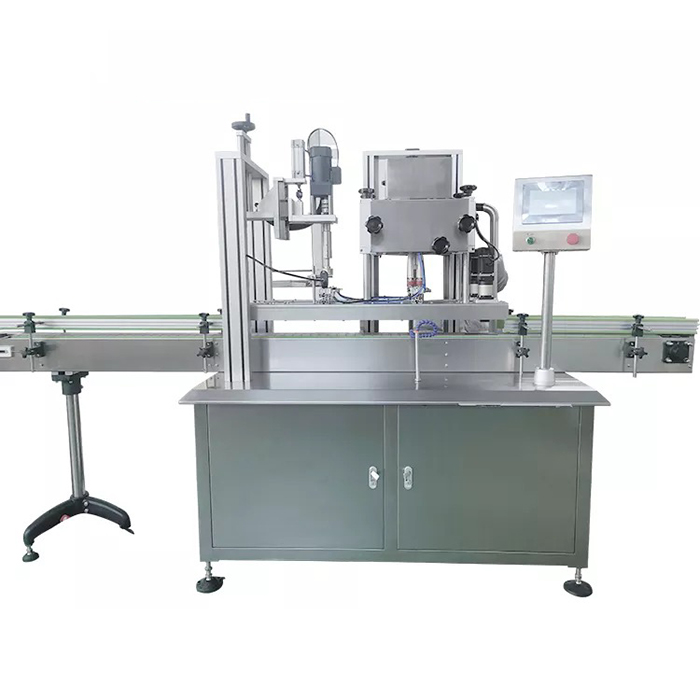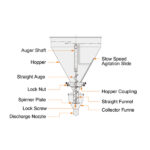As the name implies the paste filling machine is a machine used to fill paste. Paste is a generic term for the majority of materials. This guide will introduce how to choose a paste filling machine. This guide includes the following parts:
- What is paste and what are its characteristics
- Common paste packaging containers
- The choice of paste filling machine and why
- The choice of capping and labeling equipment
What is paste and what are its characteristics

Viscosity: Viscosity is a well-known term in the packaging industry, especially when it comes to preparing liquids for the shelf. In general packaging terms, the viscosity of a product is referring to how freely a product flows. Low viscosity products, such as water, flow freely and easily. The higher the viscosity of a liquid climbs, the less freely it flows. Motor oil and honey would be slightly higher in viscosity, and products such as putty and sealant would be at the top of a viscosity chart. Common sense dictates that water flows more freely than honey, motor oil or putty, so that a general idea of a products viscosity can often be garnered just by seeing the product and whether it is thick or thin. Common Liquid Viscosity Chart
Paste viscosity is a vague term the viscosity of many materials. Since the paste itself is a vague concept, the viscosity of the paste can range from a few hundred to hundreds of thousands.

Characteristics: Paste is a substance between liquid and solid, and its fluidity is not high. However, due to the large number of paste materials, fluidity has become a relative concept.
Common paste packaging containers
A wide variety of paste products will have a wide variety of paste packaging containers, the common packaging paste containers are as follows:
The choice of paste filling machine and why
When filling free flowing liquids, gravity may be enough to move the fluid from a tank to the bottles. However, thicker products, such as paste, honey, jams, putty and even motor oil, may need a little encouragement to slide in to waiting bottles. Varying degrees of viscosity are one of the reasons that a number of different filling machines exist. And different machines are built to handle different viscosities. Both pump fillers and piston filling machines will typically be seen in projects that involve thick liquids. In addition, for packagers who use tubes to pack paste, tube filling and sealing machines will be a good choice.

Automatic Paste Filling Machine

Semi Automatic Paste Filling Machine
For paste filling applications, liquid filling machinery that can handle highly viscous substances is required. VKPAK carries various types of liquid fillers, cappers, conveyors, and labelers that are intended for liquids of low to high viscosity. Our equipment can successfully full pastes and other types of thick nonfood or food products. Depending on the type of paste product your facility manufactures and packages, we can help you select the right paste filling machinery to serve your facility for years.
Paste products(or thicker products) require more than just gravity to move them through the product pathway - from the tank, through the fill bar, down the tubing and into the waiting bottles. Just like free-flowing products, there are different options to fill paste products, below we will discuss arguably the two most popular in the pump and piston filling machines.
Paste Piston Filler
Piston filling machines will pull product into a cylinder and disperse it with the help of the piston. Piston fillers work with paste products by using suction to pull product into the cylinder when the piston retracts. To fill the bottles, the piston will then push product out of the cylinder and in to waiting containers. Like above, the "flow" of paste products will receive assistance, in this case by the movement of the piston in and out of the cylinder. Piston fillers are also ideal for thick products like jams and sauces that may contain food particulates both small and large, as the cylinder allows for a larger open area for the product.
Paste Pump Filler
Pump filling machines, quite simply, use a pump to move product through a pathway and in to the bottles. Paste or liquid will be pulled from a bulk source or tank and the pumps are used to meter out the product based on time or pump movement (pulse). While assisting with dispensing the correct amount of product, the pumps also move paste products that might not flow from a raised tank, or at the very least would not flow fast enough to make the machine an efficient investment. Just like the piston filler, pump filling machines are available in different levels of automation for packagers large and small. Pump Filler: The Ultimate Guide
Paste Tube Filling and Sealing Machine
The paste tube filler and sealer shall automatically operate to fill laminate tubes, aluminium tubes or plastic tubes with paste products (or other products such as , cream, gel, and ointment.) and seal the bottom of the tube with filled products with heat sealer or crimper. A tube will be transferred via a single transfer chute and turned the bottom up. The tube is moved by rotation wheel to the dosing station. The tube is filled with product with adjustable volume. Then the filled tube is moved to the seal station to seal the bottom of the tube whether heat sealer or laminate crimper. The sealed tube is conveyed out of the machine on the downstream by the transport system.
Why Are Pump and Piston Fillers Better Choices for Paste Products?
For thicker, more viscous products like paste, piston and pump fillers will be the main topic of conversation. While there are exceptions, these machines usually fit into these two categories. But why to piston and pump fillers work better for viscous products?
To explain, let's briefly look at the two machines that handle the more free-flowing products. Gravity filling machines, as the name suggests, uses the force of gravity to complete a fill. A simple gravity filler will include a tank that sits over the fill heads. When the heads are activated, ball valves or other simple valves will open, allowing the product to flow from the tank and into the waiting containers. No other force is used to make the product flow. For this reason, slow flowing or thick products would take extra time to complete the fill, making the gravity filler a poor choice for thicker products.
Overflow filling machines, also often used for free-flowing products, use a special nozzle that allows bottles to be filled to a specific level, rather than by a pre-set volume. An overflow filler will use a pump to push product through the nozzles. When the desired fill level has been reached, liquid flows through a return port on the nozzle back into a holding tank - basically recirculating to be used again. While the pump can push product into the bottles, thicker products may cause issues in trying to get the liquid to recirculate. From long fill times to clogged return ports, overflow fillers simply work better with thin to medium viscosity products.
Piston and pump fillers, however, provide two ways to achieve accurate volumetric fills for high viscosity products without the issue of recirculation. Pump fillers provide an extra push by using a single pump for each fill head on the bottle filling machine. The pumps provide the extra push to quickly move thicker liquids through the product pathway and into the waiting bottles or containers. Furthermore, the pump used can be matched to the product to ensure consistent, reliable and efficient fills for each cycle run.
Piston filling machines will pull product into an empty cylinder to be pushed out by the piston with each cycle run. Like the pumps, the piston provides a little extra push to move thick products reliably and consistently while allowing for highly accurate volumetric fills. The extra push from pumps or pistons is what makes these two filling machines ideal for thick, highly viscous liquids.
The choice of capping and labeling equipment
Following completion of the liquid filling process, cappers can apply different types of caps to packages, forming an airtight and liquid-tight seal that prevents contamination and leakage. Labelers can apply high-quality custom-printed labels to paste jars and other types of containers.A system of conveyors keeps the entire liquid packaging process efficient, carrying containers between stations with consistent efficiency. This combination of equipment can form a paste filling line that provides years of reliable operation.
Paste jar & bottle capping machine, usually choose the following equipment, the specific machine selection needs to be based on the shape of the cap, size, capping method to decide.
Generally, a vacuum capping machine is recommended for food paste capping, and a spindle or chuck capping machine is recommended for paste capping in the daily chemical or pharmaceutical industries.
Summary
For the paste filling of bottles or jars and cans, it is recommended to use a piston filling machine or a pump filling machine, and for the tube paste filling, it is recommended to use a tube filling and sealing machine. To get started with the design and installation of custom paste filling equipment, speak with one of the experts at VKPAK today for assistance. The selection of liquid packaging machinery in our inventory allows customers to design customized systems. Choose from a range of sizes and setups of paste filling to meet space requirements and other needs. Our experts can help you determine which equipment will best suit your facility before assisting with production line design and implementation. With our state-of-the-art liquid filling systems installed in your facility, you can benefit from a cost-effective production line that provides top-quality results.






















